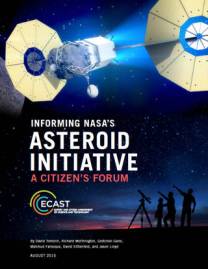 Although asteroids rarely enter the national conversation—often associated more with blockbuster movies and dinosaurs than considered a realistic threat to life on Earth—the consequences of a major asteroid collision could be devastating. The explosion of the relatively small Chelyabinsk meteor over Russia in 2013 was a spectacular reminder of the many larger undetected asteroids that could cause an enormous amount of damage to human lives and infrastructure if they were to collide with the Earth in a populated area.
Although asteroids rarely enter the national conversation—often associated more with blockbuster movies and dinosaurs than considered a realistic threat to life on Earth—the consequences of a major asteroid collision could be devastating. The explosion of the relatively small Chelyabinsk meteor over Russia in 2013 was a spectacular reminder of the many larger undetected asteroids that could cause an enormous amount of damage to human lives and infrastructure if they were to collide with the Earth in a populated area.
In order to address this threat, what would an effective detection system that could improve humans’ ability to protect Earth look like? If we had the capability to find all of the asteroids with the potential to cross Earth’s path, what options might be available to address a detected threat? Thinking further into the future, if we develop the capacity to redirect an asteroid or piece of an asteroid then send astronauts to study it, what might those capabilities mean for future space exploration? Could they enable or support the ultimate ambition of a crewed mission to Mars? Soliciting answers to these questions and, as importantly, the rationales and values behind those answers, animated a recent project in which citizens voiced their thoughts and preferences about planetary defense and space exploration.
This project, a cooperative effort implemented by the National Aeronautics and Space Administration (NASA) and the Expert and Citizen Assessment of Science and Technology (ECAST) network, provided a citizen-focused, participatory technology assessment of NASA’s Asteroid Initiative that increased public understanding of and engagement in the Initiative. The project had two main goals. The first was to develop and apply a participatory technology assessment that elicited nuanced information from a diverse group of citizens whose insights would not otherwise be available to decision makers. Second, through informed, structured feedback from citizens in multiple locations, the project aimed to provide public views of the Asteroid Initiative as input into NASA’s decision-making process.